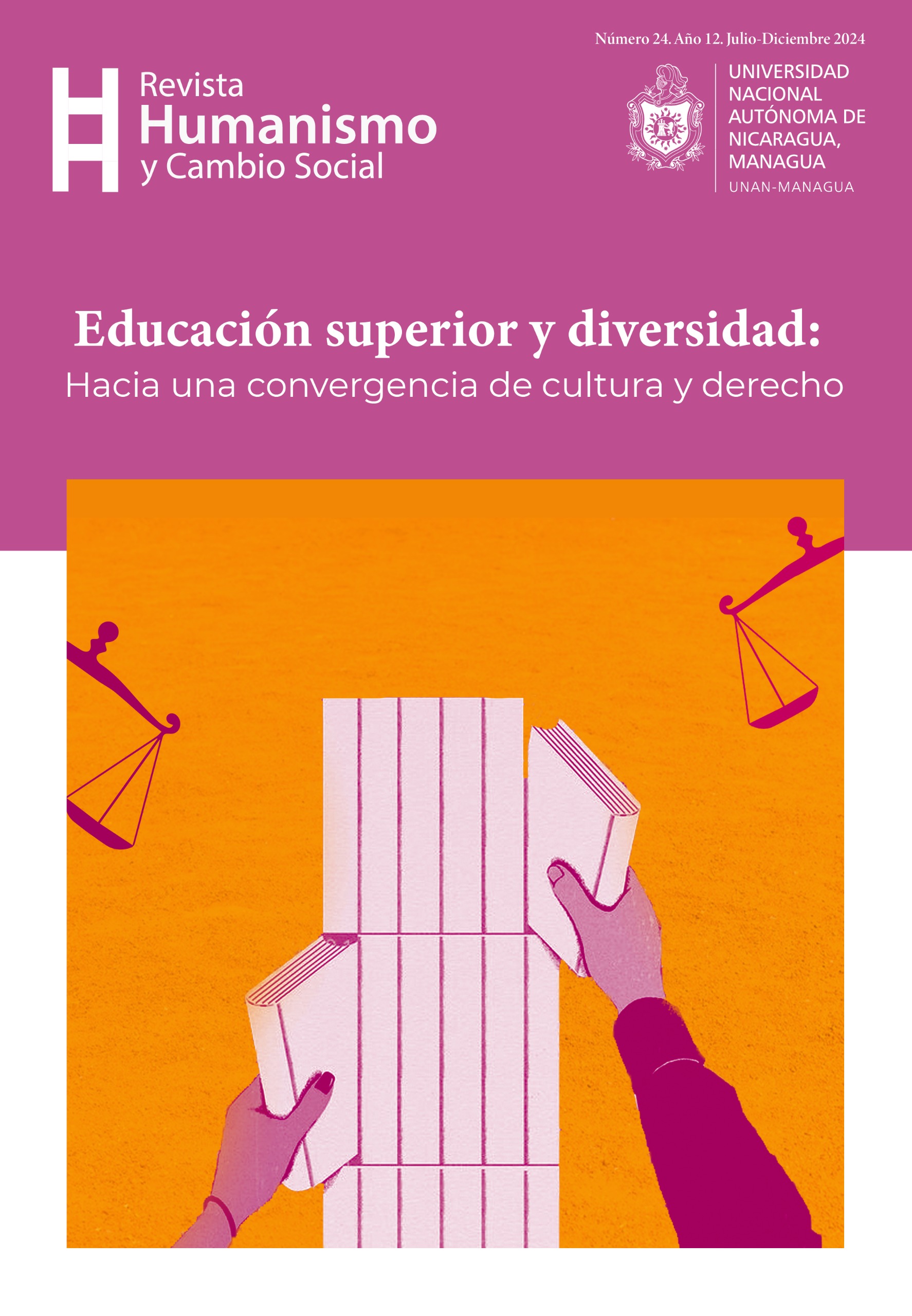Cultural Agenda and Symbolic Public Space in Nicaragua: The Newspaper Flecha (1943-1945)
DOI:
https://doi.org/10.5377/hycs.v1i24.19892Keywords:
Nicaragua’s cultural agenda, periodicals, Flecha newspaper, World War IIAbstract
The purpose of this article is to identify the features that shaped Nicaragua’s cultural agenda during the 1940s, using the newspaper Flecha (1940-1958), published in the city of Managua, as the primary source and object of study. The cultural theme is justified for the following reasons: it was a recently established newspaper, the cultural and political profile set by its director and founder, Hernán Robleto, and the respectful, constructive treatment given to the informational content. To achieve this approach, a representative sample from the decade was selected, consisting of three years (1943-1945) and three different months. For data collection and processing, an instrument was designed to record the information according to eight chosen cultural themes and the journalistic genres most frequently used for their dissemination. This review work, as a study exercise from a historical perspective of a media outlet, allowed for the identification of some thematic continuities that remain on the agenda today, such as education, recognizing its role in development, and the socialization of discursive practices that promote constructive dialogue for the well-being of society at the time. In politics, the newspaper was not unaware of the central issues surrounding the regime of Anastasio Somoza García. However, the backdrop of World War II during this period made the 1944 crisis a subject handled with caution in the newspaper, although it was not exempt from censorship.
Downloads
References
Alonso, P. (2004). Introducción. En: Paula Alonso (comp.), Construcciones impresas. Panfletos, diarios y revistas en la formación de los estados nacionales en América Latina (1820-1920). Fondo de Cultura Económica. Pp. 7-12.
Arellano, J.E. (2019) El bienamado de Washington: Tacho Somoza (1896- 1956). JEA editor
Arellano, J.E. (1994) Diccionario de autores nicaragüenses (T. I-T. II). Biblioteca Nacional “Rubén Darío”.
Ayerdis, M. (2004). Publicaciones periódicas, formas de sociabilidad y procesos culturales en Nicaragua (1884-1926). Banco Central de Nicaragua.
Biblioteca Rubén Darío de Nicaragua (1943). Nicaragua Histórica.
Cue, A. (Edit.) (1999). Cultura escrita, literatura e historia. Conversaciones con Roger Chartier. Fondo de Cultura Económica.
Chartier, R. (2007). La historia o la lectura del tiempo. Gedisa editorial.
Chiariamonte, J.C., Marichal, C., y Granados, A. (2008). Introducción: Orígenes históricos de las identidades políticas y nacionales. En: José Carlos Chiaramonte, Carlos Marichal y Aimer Granados (Comps.) Crear la nación. Los nombres de los países de América Latina. Editorial Sudamericana Pp. 7-15.
Delgado, J. S. (2013) Universidad Central de Nicaragua. En el centro de la historia (1941-1946).
Escalante Gonzalbo, F. (1992). Ciudadanos imaginarios. Memoriales de los afanes y desventuras de la virtud y apología del vicio triunfante en la república mexicana. Tratado de moral pública. El Colegio de México.
Guerra, F-X y Lempérière, A., et. al. (1998). Los espacios públicos en Iberoamérica. Ambigüedades y problemas. Siglo XVIII-XIX. Centro Francés de Estudios Mexicanos y Centroamericanos/Fondo de Cultura Económica.
López, M. (2007). Cómo se fabrican las noticias. Fuentes, selección y planificación. Paidós.
Magrit, Eric. (2005). Sociología de la comunicación y de los medios. Fondo de Cultura Económica.
Molina Jiménez, I. (1995). Impresiones de fin de siglo. La expansión de la cultura impresa
en Nicaragua y Costa Rica (1880-1914). Revista de Historia, 5-6, p. 30-38.
Pérez Yglesias, M. (2000). La comunicación: el poder de la gente. En: Patricia Vega Jiménez (Comp.), Comunicación, política e identidad. Editorial de la Universidad de Costa Rica. Pp. 129-179.
Periser, E. (2017). El filtro burbuja. Cómo la red decide lo que leemos y lo que pensamos. Taurus.
Rama, A. (1984) La ciudad letrada. Ediciones del norte.
Vega Jiménez, P. (1999). “La prensa de fin de siglo” (La prensa en Costa Rica) 1889-1900.
En: Patricia Vega Jiménez (Comp.) Comunicación y construcción de lo cotidiano. DEI. Pp. 65-78.
Walter, K. (2004). El régimen de Anastasio Somoza (1936-1956). Instituto de Historia de Nicaragua y Centroamérica.
Downloads
Published
Issue
Section
License
Copyright (c) 2025 Revista Humanismo y Cambio Social

This work is licensed under a Creative Commons Attribution-NonCommercial-ShareAlike 4.0 International License.




